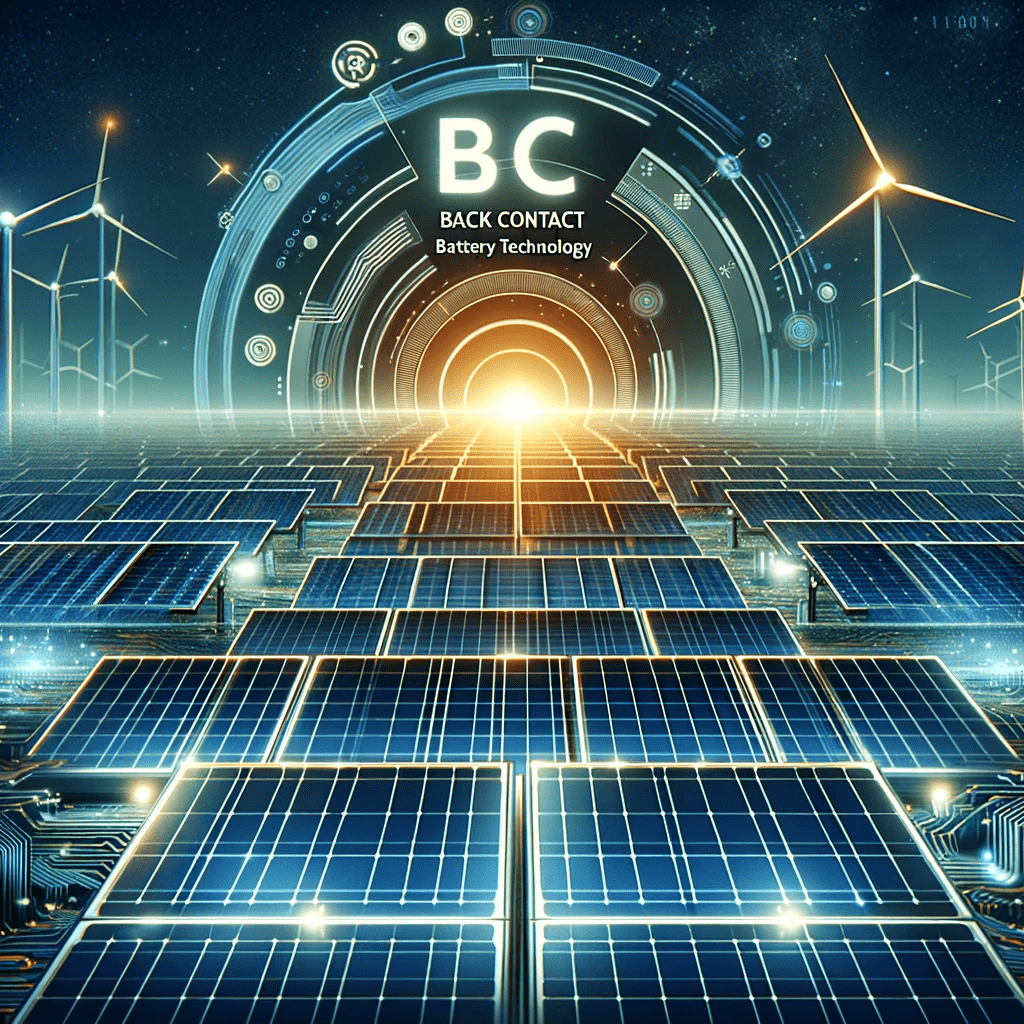
Introduction to BC Battery Technology
In the dynamic world of renewable energy, Back Contact (BC) battery technology emerges as a groundbreaking innovation, redefining the standards of solar power generation. This technology marks a pivotal shift in photovoltaic energy conversion, setting new benchmarks for efficiency and power output.
The Core Mechanism: A Paradigm of Efficiency
At the heart of BC battery technology lies a distinctive back contact design that significantly amplifies light absorption. By strategically relocating metal contacts and PN junctions to the rear of the solar cell, this avant-garde method eliminates any front surface obstructions. This ingenious reconfiguration not only enhances the cell’s ability to harness sunlight but also substantially increases its light-to-electricity conversion efficiency.
Versatility and Integration with Advanced Technologies
BC battery technology’s versatility is a cornerstone of its appeal. Far from being confined to a single cell type, it operates as a flexible platform compatible with various cutting-edge technologies. Its integration with other solar technologies, such as TOPCon+BC (Tunnel Oxide Passivated Contact solar cell) and HJT+BC (Heterojunction Technology), has been instrumental in elevating solar cell efficiency to unprecedented levels.
BC Battery’s Role in N-type Technologies
Within the realm of N-type battery technologies, BC battery technology holds a prominent place. It synergizes with other technologies like TOPCon and HJT, each bringing unique contributions to the enhancement of solar cell performance. While BC batteries are centered around structural innovations to optimize light absorption, TOPCon and HJT are more focused on advancing surface passivation and heterojunction interfaces.
The Future Trajectory in Solar Energy
As the quest for more efficient, cost-effective solar solutions intensifies, BC battery technology stands as a formidable candidate. Its amalgamation of improved power output, adaptability, and compatibility with other technological advancements positions it well for a leading role in the future landscape of solar energy.
Frequently Asked Questions (FAQs)
- How does BC battery technology boost solar cell efficiency?
BC battery technology enhances efficiency by relocating contacts and junctions to the back, thereby maximizing the cell’s sunlight absorption and electricity conversion capability. - What differentiates BC battery technology from TOPCon and HJT?
BC battery technology focuses on the back contact design, while TOPCon and HJT emphasize surface passivation and heterojunction interfaces, respectively. Their common goal is to augment solar cell performance, but their methodologies differ. - Can BC battery technology be combined with other advancements?
Yes, BC battery technology can be amalgamated with technologies like TOPCon and HJT, resulting in hybrid cells like TBC (TOPCon+BC) and HBC (HJT+BC), which leverage the strengths of each individual technology for superior performance. - What does the future hold for BC battery technology in the solar industry?
With its high efficiency, adaptability, and compatibility, BC battery technology is poised to play a pivotal role in the evolution of the solar industry, offering substantial prospects for enhancing solar power generation and reducing costs. - What challenges does BC battery technology face?
Despite its potential, BC battery technology encounters hurdles like production costs, complex manufacturing processes, and compatibility issues with other technologies. Ongoing innovation and research are crucial to overcome these challenges.
Conclusion
BC battery technology stands at the forefront of solar energy innovation, heralding a new epoch of efficiency and effectiveness in solar power generation. Its unique design and integration capabilities promise not only to meet the growing energy demands of our world but also to propel us further towards a sustainable, renewable energy future.


